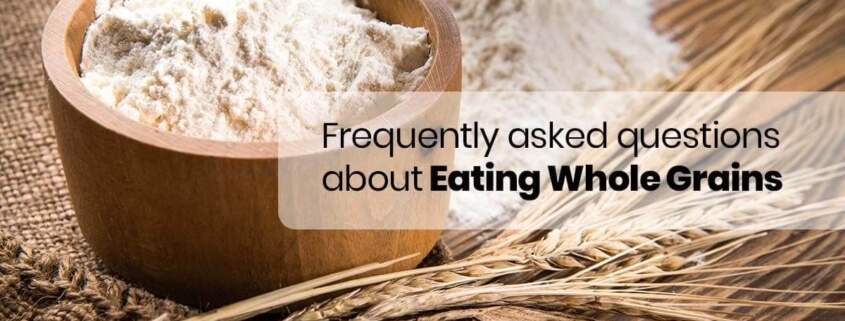Frequently Asked Questions About Eating Whole Grains
You’ve undoubtedly heard and read it at least a thousand times by now: You should be eating whole grains. But are you? Most people still eat the vast majority of their grains in the form of unhealthy refined grains—especially bread and other baked goods made with white flour.
So let’s take a closer look at the topic of eating whole grains, including why it’s important and how to do it.
What Are Whole Grains?
Whole grains are a whole food, meaning they’re naturally occurring and still basically intact the way they’re found in nature when you consume them. Whole foods are good. A grain is whole when it still has its three main parts, the bran, the germ, and the endosperm. The bran and germ are where most of the grain’s nutrients are contained, but these are the two parts stripped away during processing to make refined grains.
Some whole grains include whole wheat, brown rice, corn, oats, barley, rye, bulgur, quinoa, buckwheat, sorghum, millet, amaranth, farro, triticale, spelt, and freekeh (which is young spelt). White flour and white rice are the two most common forms of refined grains in the American diet.
Why Should You Be Eating Whole Grains?
Thanks to fad diets, lots of people think carbohydrates are evil. But there are good carbs and bad carbs, and good carbs are an essential basic nutrient, necessary for continuing good health and high energy levels. Whole grains provide good carbs, so they’re healthy, satisfying, and a source of sustained energy. They’re also high in dietary fiber; B-complex vitamins like thiamin (B1), riboflavin (B2), niacin (B3), and folate (B9); iron, selenium, magnesium, and numerous other minerals; antioxidants; and they have some plant-based protein.
A diet rich in whole grains is associated with reduced risk of numerous common, devastating diseases, like obesity, type 2 diabetes, heart disease, stroke, and many types of cancer.
Why Are Refined Grains Bad?
As you may have put together by now, refined grains (which are just the largest part of the grain, the endosperm) have been stripped of almost all their nutritional value, making them little more than empty calories.
When refined grains first became a major part of our diet, nutritional deficiencies quickly started occurring. So, we began enriching refined grains with some of what they lost, including B vitamins and iron. That’s why you often see “enriched wheat flour” on nutritional labels. However, refined grains still have almost no fiber or a number of the other nutrients missing without the bran and germ. And the added nutrients are not replaced in the same proportions as they’re found naturally in whole grains.
Refined grains are bad carbs, meaning they cause quick spikes and crashes in blood glucose levels. This contributes to insulin resistance and elevated blood sugar levels, increasing the risk of type 2 diabetes and other conditions. It also means you get hungry shortly after eating, which is why a diet high in refined grains increases the risk of becoming overweight or obese. And it also causes crashes in energy levels. Processed grains also increase blood triglyceride levels, another risk factor for type 2 diabetes, as well as heart disease and other health problems.
How Can You Eat More Whole Grains?
It’s one thing to know that you should be eating more whole grains, but it’s another thing to actually do it. While it’s true that avoiding white flour can be tricky just because it’s so prevalent, there are plenty of simple ways to work more whole grains into your diet. Here are just a few suggestions:
- Opt for whole wheat or whole grain breads and other baked products; check the nutrition label and make sure “whole wheat flour” is the first ingredient, and don’t be fooled if it just says “wheat flour;” also, “multigrain” does not mean whole grain
- Buy whole wheat versions of items like spaghetti, penne, cous cous, and other pastas; also, find whole grain mixes for pancakes, waffles, muffins, etc.
- Use whole wheat bread crumbs instead of regular bread crumbs for chicken cutlets and other breaded dishes
- Eat oatmeal or granola made from oats for breakfast, or have other types of whole grain breakfast cereal; stay away from granola and cereals with lots of added sugar, though
- Choose brown rice instead of white rice; if you’re not too into cooking rice, consider packages of parboiled brown rice as a convenience option that cooks fast and makes it easy to get whole grain brown rice into your diet
- Have unsalted or lightly salted, unbuttered popcorn (yes, that’s a whole grain!) as a healthy, low-calorie snack
- Corn on the cob is a tasty whole grain side
- Experiment with whole grains like quinoa and barley for side dishes, soups, and more
- Add quinoa, amaranth, spelt, freekeh, farro, or wheat berries to your salads



